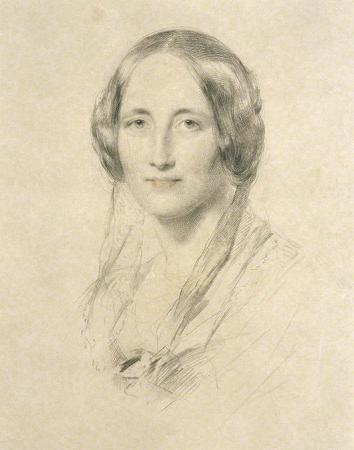Elizabeth Gaskell (1810 - 1865). Elizabeth Cleghorn Gaskell, often referred to as Mrs Gaskell, was an English novelist, biographer, and short story writer. Her novels offer a detailed portrait of the lives of many strata of Victorian society, including the very poor, and are of interest to social historians as well as lovers of literature. Her first novel, Mary Barton, was published in 1848. Gaskell's The Life of Charlotte Brontė, published in 1857, was the first biography of Brontė. In this biography, she only wrote of the moral, sophisticated things in Brontė's life, the rest she left out, deciding that certain, more salacious aspects were better kept hidden. Among Gaskell's best known novels are Cranford, North and South, and Wives and Daughters, each having been adapted for television by the BBC. Gaskell was born Elizabeth Cleghorn Stevenson on 29 September 1810 in Lindsey Row, Chelsea, London, at the house that is now 93 Cheyne Walk. She was the youngest of eight children; only she and her brother John survived infancy. Her father, William Stevenson, a Unitarian from Berwick-upon-Tweed, was minister at Failsworth, Lancashire, but resigned his orders on conscientious grounds; he moved to London in 1806 with the intention of going to India after he was appointed private secretary to the Earl of Lauderdale, who was to become Governor General of India. That position did not materialise, however, and instead Stevenson was nominated Keeper of the Treasury Records. His wife, Elizabeth Holland, came from a family established in Lancashire and Cheshire that was connected with other prominent Unitarian families, including the Wedgwoods, the Martineaus, the Turners and the Darwins. When she died 13 months after giving birth to her youngest daughter, she left a bewildered husband who saw no alternative but to send Elizabeth to live with her mother's sister, Hannah Lumb, in Knutsford, Cheshire. Elizabeth's future while she was growing up was uncertain, as she had no personal wealth and no firm home, though she was a permanent guest at her aunt and grandparents' house. Her father remarried to Catherine Thomson in 1814. They had a son, William, in 1815, and a daughter, Catherine, in 1816. Although Elizabeth spent several years without seeing her father, to whom she was devoted, her older brother John often visited her in Knutsford. John was destined for the Royal Navy from an early age, like his grandfathers and uncles, but he did not obtain preferment into the Service and had to join the Merchant Navy with the East India Company's fleet. John went missing in 1827 during an expedition to India. A beautiful young woman, Elizabeth was well-groomed, tidily dressed, kind, gentle and considerate of others. Her temperament was calm and collected, joyous and innocent, she revelled in the simplicity of rural life. Much of Elizabeth's childhood was spent in Cheshire, where she lived with her aunt Hannah Lumb in Knutsford, the town she immortalised as Cranford. They lived in a large red-brick house called Sandlebridge that overlooked the township of Alderley Edge. From 1821 to 1826 she attended a school run by the Miss Byerleys at Barford House, and after that Avonbank in Stratford-on-Avon, where she received the traditional education in arts, the classics, decorum and propriety given to young ladies from relatively wealthy families at the time. Her aunts gave her the classics to read, and she was encouraged by her father in her studies and writing. Her brother John sent her modern books, and descriptions of his life at sea and his experiences abroad. However, she was unhappy at Sandlebridge. Seeking new experiences, she opened her mind to the solace of nature, finding company in the silence of the heath. On other occasions when her cousins came to play she found consolation in young friendships. Exploring the green hollows, old shady glades of ruined cottages, she collected wild flowers and watched the singing birds. The pleasure natural things brought reflected clearly in her literary observations. At Sandlebridge, among the visitors and cousinage she played shuffleboard on the kitchen table. A young Elizabeth would go shopping to a woman in Knutsford who had an ancient place, gardens and parterres amidst an open blasted heath. Church House was directly accessible in Cranford with its high walls and garden walks. She generated confidence and self-respect from the country life. Her family regularly visited the 'Royal George Hotel', which impressed upon her a sensibility for the subtler points of architecture. Led by an interpreter, Gaskell later told Anne Thackeray Ritchie how like Cranford it was.
more...



